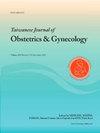Comparison of motor imagery focused pelvic floor exercises and relaxation exercises for treating dysmenorrhea: A randomized controlled study
IF 2.2
4区 医学
Q2 OBSTETRICS & GYNECOLOGY
引用次数: 0
Abstract
Objective
This study aimed to evaluate the impact of integrating motor imagery-focused pelvic floor exercises (MOPEXE) and relaxation exercise (RE) on pain and menstrual symptoms in the management of dysmenorrhea.
Materials and methods
60 participants with dysmenorrhea were randomly allocated to MOPEXE, RE, and a combination group that included both exercises. Participants were instructed to perform the relevant exercise program 3-d per week for eight weeks. The Menstruation Attitude Questionnaire (MAQ), Functional and Emotional Dysmenorrhea Scale (FEDS), and Short-Form McGill Pain Questionnaire (SF-MPQ) were used to assess pre- and post-treatment participant-reported outcomes.
Results
Combination therapy revealed a significant decrease in VAS and FEDS (emotional) and an increase in MAQ (deliberating event, natural event, anticipation, and denial parameters) compared to MOPEXE. MOPEXE group demonstrated a significant increase in menstruation as a bothersome event and a decrease in FEDS (functional). In comparison with the RE group, MAQ scores were significantly higher in the combination group. A significant reduction in VAS and an increase in the denial parameter of MAQ were observed in the RE group.
Conclusion
Physical therapy with pelvic floor and relaxation exercises centered on motor imagery is an effective measure to reduce painful symptoms and to relieve dysmenorrhea both in terms of functional and emotional aspects.
运动意象集中盆底练习和放松练习治疗痛经的比较:一项随机对照研究
目的:探讨运动影像集中盆底运动(MOPEXE)和放松运动(RE)对痛经患者疼痛和月经症状的影响。材料与方法将60名痛经患者随机分为MOPEXE组、RE组和包括两种运动的联合组。参与者被要求连续八周每周进行相关的3d锻炼项目。使用月经态度问卷(MAQ)、功能与情绪痛经量表(fed)和短格式麦吉尔疼痛问卷(SF-MPQ)评估治疗前和治疗后参与者报告的结果。结果与MOPEXE相比,联合治疗VAS和FEDS(情绪)显著降低,MAQ(慎重事件、自然事件、预期和拒绝参数)显著增加。MOPEXE组表现出月经作为恼人事件的显著增加和联邦调查局(功能性)的减少。与RE组比较,联合用药组的MAQ评分明显较高。RE组VAS评分明显降低,MAQ拒绝参数明显升高。结论盆底物理治疗和以运动意象为中心的放松练习是减轻痛经疼痛症状、缓解痛经功能和情绪的有效措施。
本文章由计算机程序翻译,如有差异,请以英文原文为准。
求助全文
约1分钟内获得全文
求助全文
来源期刊

Taiwanese Journal of Obstetrics & Gynecology
OBSTETRICS & GYNECOLOGY-
CiteScore
3.60
自引率
23.80%
发文量
207
审稿时长
4-8 weeks
期刊介绍:
Taiwanese Journal of Obstetrics and Gynecology is a peer-reviewed journal and open access publishing editorials, reviews, original articles, short communications, case reports, research letters, correspondence and letters to the editor in the field of obstetrics and gynecology.
The aims of the journal are to:
1.Publish cutting-edge, innovative and topical research that addresses screening, diagnosis, management and care in women''s health
2.Deliver evidence-based information
3.Promote the sharing of clinical experience
4.Address women-related health promotion
The journal provides comprehensive coverage of topics in obstetrics & gynecology and women''s health including maternal-fetal medicine, reproductive endocrinology/infertility, and gynecologic oncology. Taiwan Association of Obstetrics and Gynecology.
 求助内容:
求助内容: 应助结果提醒方式:
应助结果提醒方式:


